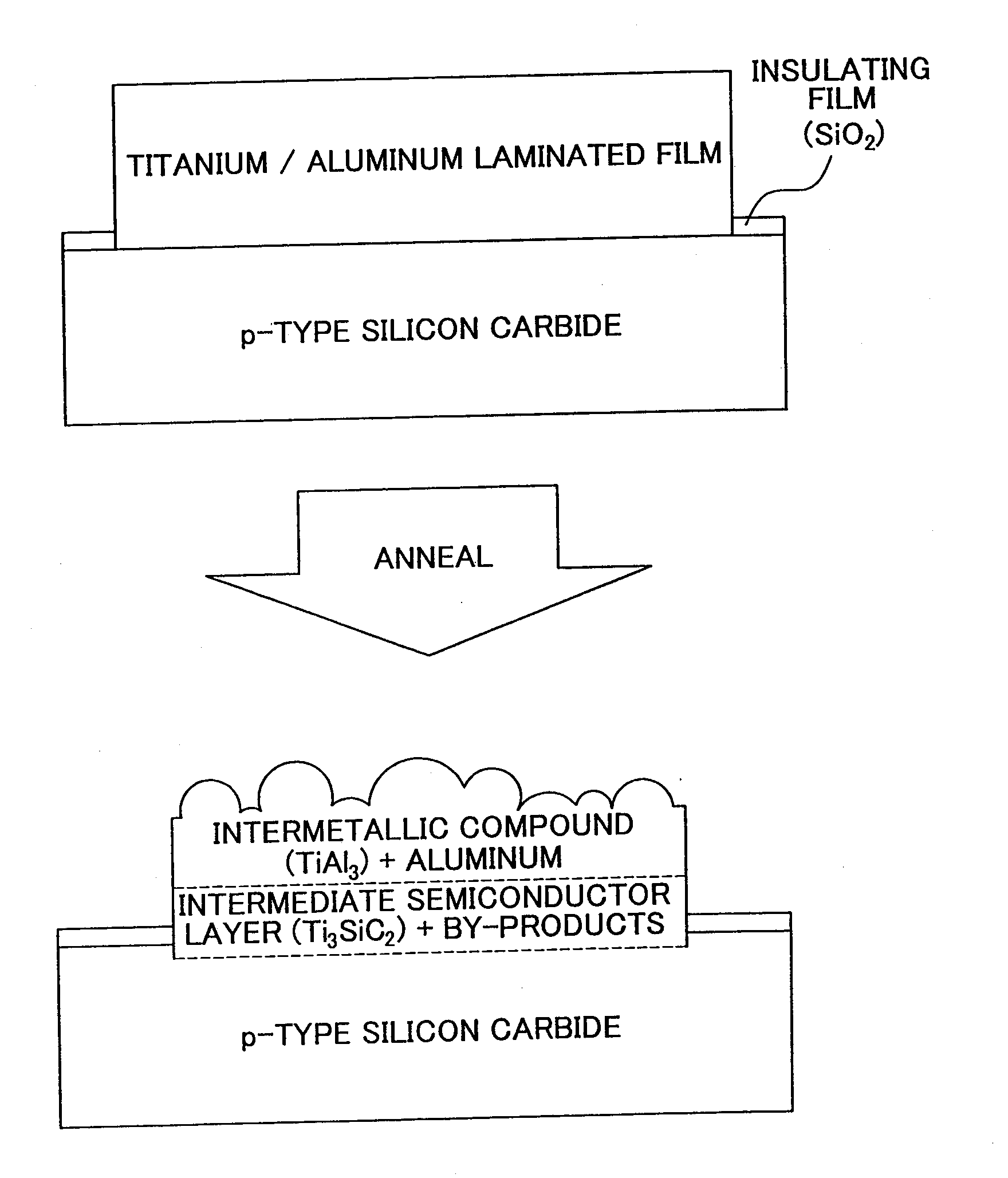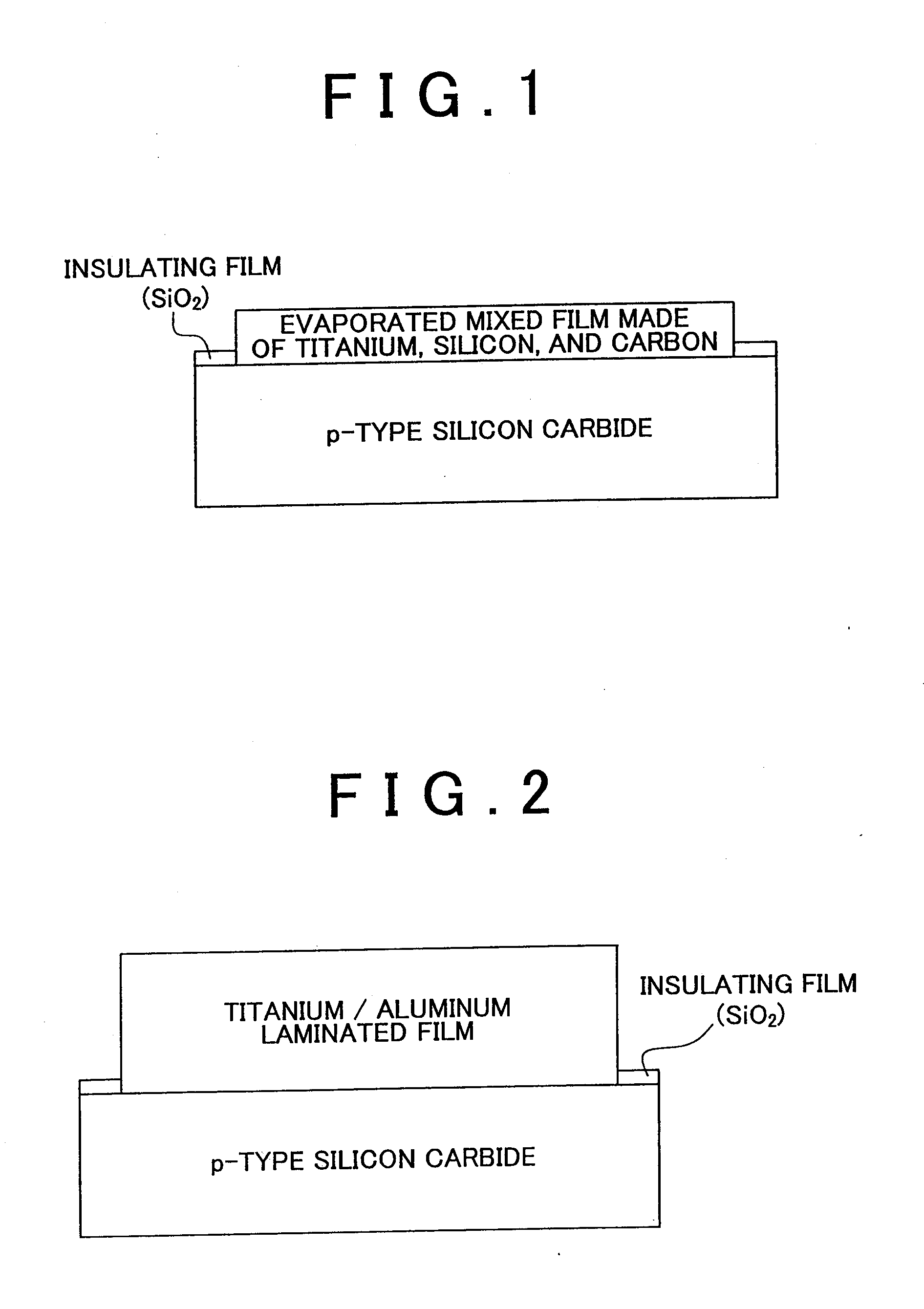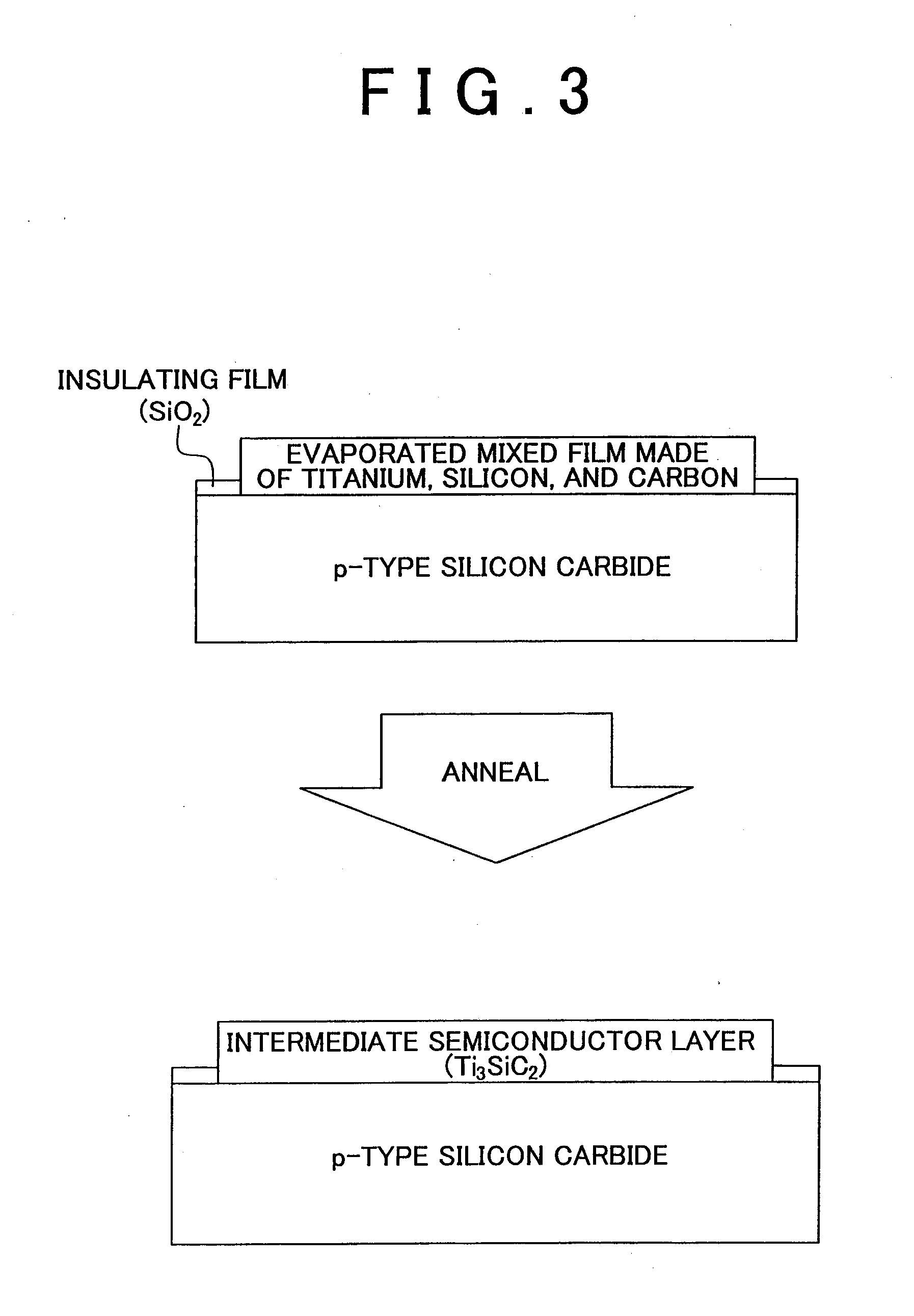Ohmic electrode and method of forming the same
a technology of ohmic electrode and semiconductor element, which is applied in the direction of basic electric elements, electrical apparatus, and semiconductor devices, can solve the problems of poor wettability between al melt and sic semiconductor, melt agglutinate, etc., and achieve good ohmic characteristic, high surface smoothness, and good ohmic characteristic
- Summary
- Abstract
- Description
- Claims
- Application Information
AI Technical Summary
Benefits of technology
Problems solved by technology
Method used
Image
Examples
first example
[0042]An evaporated film was formed using a semiconductor substrate made of p-type 4H—SiC. The semiconductor substrate made of p-type 4H—SiC had a thickness of 369 μm, resistivity of 75 to 2500 Ω cm, and a plane inclined from a plane (0001) by an off-angle of 8° toward a [11-20] direction. An electrode was to be formed on an Si surface of the semiconductor substrate. The evaporated film was formed under the condition described below. Radio-frequency magnetron sputtering equipment was used as deposition equipment. Powder, lumps, or compacts of Ti, Si, and C (the composition ratio (the atomic composition ratio), Ti:Si:C=3:1:2) were used as sputtering targets. The evaporation condition was as follows. Before the Ti—S—C film was deposited, the substrate was cleaned by an ordinary method. The evaporation was performed under the Ar discharge atmosphere, at the output of 200 W in the Ar forward direction, for a discharge time of 360 seconds. The evaporated ternary mixed film, which include...
second example
[0048]FIG. 7 is a schematic diagram showing a field-effect transistor which is made of SiC, and which is produced using the ohmic electrode of the p-type SiC semiconductor element according to the invention.
third example
[0049]FIG. 8 is a schematic diagram showing an N-channel power field-effect transistor (a power MOSFET) that is produced using the ohmic electrode of the p-type SiC semiconductor element according to the invention.
PUM
 Login to View More
Login to View More Abstract
Description
Claims
Application Information
 Login to View More
Login to View More - R&D
- Intellectual Property
- Life Sciences
- Materials
- Tech Scout
- Unparalleled Data Quality
- Higher Quality Content
- 60% Fewer Hallucinations
Browse by: Latest US Patents, China's latest patents, Technical Efficacy Thesaurus, Application Domain, Technology Topic, Popular Technical Reports.
© 2025 PatSnap. All rights reserved.Legal|Privacy policy|Modern Slavery Act Transparency Statement|Sitemap|About US| Contact US: help@patsnap.com



